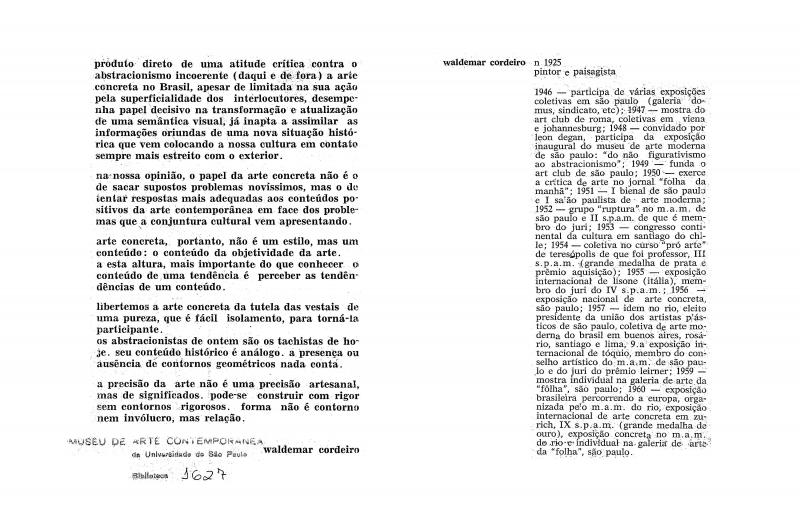Willys de Castro (1926–88), a painter, printmaker, draftsman, set designer, and graphic artist from Minas Gerais moved to São Paulo in 1941 to study with André Font. He produced his first abstract-geometrical drawings in the early 1950s. He and Hércules Barsotti (1914?2010)—his lifelong partner—opened a graphic arts studio. On his return from a study trip to Europe, he began to feel greater affinity for the “Neo-Concrete” movement in Rio de Janeiro, headed by Ferreira Gullar. From then (1959) until 1962 he worked on his “objetos ativos” series that explored the point of transition between plane and volume by using certain geometrical “trompe l’œil” effects, while questioning the need for a canvas as a support for a work of visual art.
This essay discusses Willys de Castro’s artistic approach to his “objetos ativos,” which made an important contribution to the Brazilian Constructive movement in the 1960s. His works prompted the viewer to move around in order to appreciate their full effect.
In 1960—the year of his exhibition, when this essay was published—de Castro showed his “objetos ativos” at the II Exposição de Arte Neoconcreta in Rio de Janeiro and later on at the Galeria Aremar in Campinas (in the state of São Paulo). This gallery was an important forum for the Concrete and Neo-Concrete movements, as can be seen in the article by the leader of the Concrete group in São Paulo, Waldemar Cordeiro, “[Produto direto de uma atitude crítica]” [see doc. no. 1087239].

